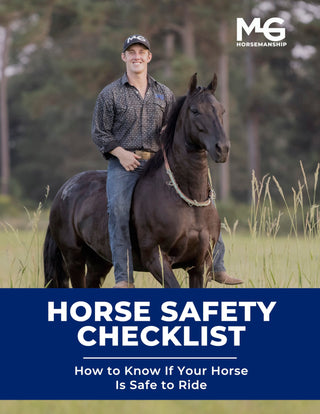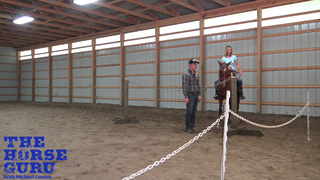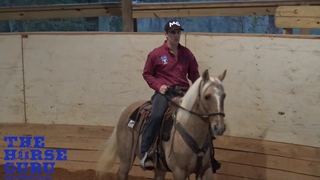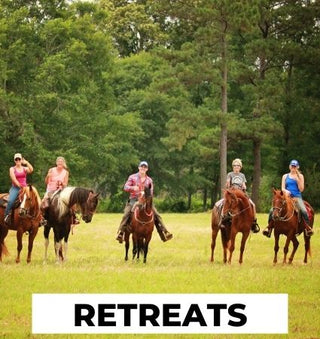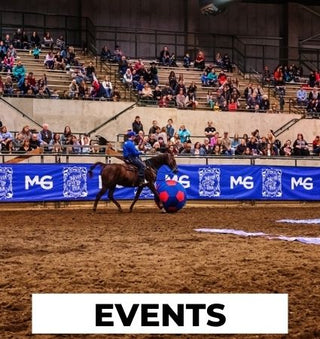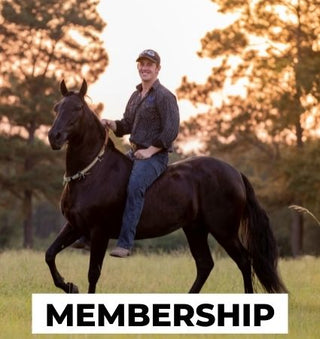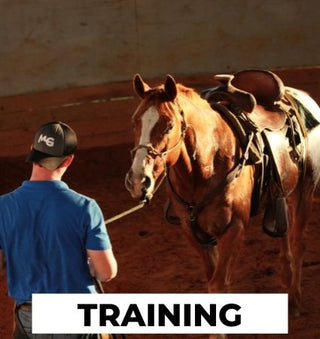Watch the Video Here or continue reading below!
Dealing with a hot, sensitive horse can feel like trying to stop a freight train with a piece of string. Whether it's an ex-racehorse, a runaway barrel horse, or a gaited horse with too much go, pulling against them only escalates the problem. As horse trainer Michael Gascon explains in his Equine Affaire clinic, the secret isn’t in overpowering your horse — it’s in educating them without giving them anything to fight against.
The Problem with Pulling
When riders pull on the reins, especially with sensitive horses, the horse pulls back. This creates a power struggle that fuels adrenaline and teaches the horse to resist rather than relax. Instead of trying to control the horse through strength, Gascon emphasizes redirecting their energy and offering them clear mental boundaries.
“You can’t relax like that — not if someone’s pulling on your face,” Gascon says. “Somebody’s gotta just leave you alone. Give them a chance.”
Method #1: The Spiral and Release
To break the cycle of tension, Gascon uses spiraling circles to mentally and physically slow the horse down. Here’s how it works:
-
Pick up one rein and start directing your horse in a circle.
-
Continue turning until the circle becomes so tight that the horse must slow to a walk.
-
When the horse begins to bend, stop them crooked — lock your rein into your leg so they stop with a soft, offset bend.
-
Back them up crooked with one rein, rewarding every step with a release.
This method encourages the horse to break at the poll, drop their head, and shift out of fight-or-flight mode. Once the horse relaxes, they’re allowed to walk off on a loose rein. If they speed up again, you repeat the spiral on the opposite rein.
“You’re going to give the hottest of hot horses three or four of these,” says Gascon. “Next time, when you ask him to go forward, he’s going to say, ‘Are you sure?’”
Method #2: Crystal-Clear Stopping
Gascon insists: If you can stop your horse, your horse can walk. A horse that bolts, rushes, or speeds up is often one that hasn't been taught to stop properly.
-
Stop with intention: Not with a nag, but with a clear, confident cue that brings the hind end underneath.
-
Wait for signs of relaxation: A dropped head, an exhale, or a lick and chew.
-
Ask for one step at a time: Squeeze with your legs just enough for one step, then release.
If the horse speeds up again, Gascon suggests stopping again — hard. He doesn’t mind spending over an hour to complete a short trail loop on day one. The point is consistency. Eventually, the horse learns that relief only comes when they stand still, not when they move impulsively.
The Key to Handling Spooks
Horses naturally want to flee when frightened — that’s normal. But when they spook and rear instead of moving away, it’s often because the rider took away their forward motion by grabbing the reins.
“You can only put so much air in a balloon before it pops,” Gascon warns. “If a horse can’t go forward, backward, or sideways, they explode.”
The fix? Give them their face. When approaching a scary object like water or a jump:
-
Sit back and don’t pull.
-
Let the horse explore.
-
If they try to run, redirect their energy with a rollback or small circle — without grabbing both reins.
With repetition, the horse learns that the way out of mental pressure is to go forward. Gascon even shares a story of using this method on a high-value English jumper who refused water — turning the horse from reactive to confident in a single session.
Sensitive Horses Aren’t Broken — They’re Brilliant
Gascon ends with an important message: hot, sensitive horses aren’t flawed — they’re intelligent and highly trainable. In fact, in the right hands, they can learn faster than dull, lazy horses.
“Nobody shows up to a dog obedience competition with a Basset Hound,” Gascon says. “They bring Border Collies and Heelers — because they’re sensitive and quick.”
That same sensitivity that makes a horse spooky or anxious can also make them incredibly responsive and willing — if you train the brain and not just the body.
Final Takeaway
Calming a hot horse isn’t about wearing them out — it’s about outsmarting the adrenaline with clarity, patience, and consistent pressure-and-release. With the spiral method, clear stopping cues, and a mental reset around obstacles, even the most high-strung horse can learn to walk calmly, stand still, and move forward with confidence.



